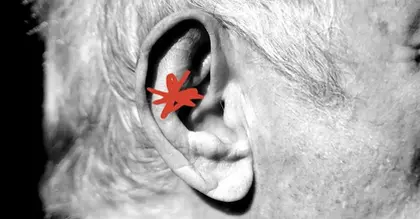Note: This document contains side effect information about rufinamide. Some dosage forms listed on this page may not apply to the brand name Banzel.
Summary
Common side effects of Banzel include: seizure, dizziness, drowsiness, fatigue, headache, nausea, and vomiting. Other side effects include: status epilepticus, ataxia, blurred vision, diplopia, and skin rash. Continue reading for a comprehensive list of adverse effects.
Applies to rufinamide: oral suspension, oral tablets.
Side effects include:
Adjunctive therapy in pediatric patients: Somnolence, headache, fatigue, dizziness, influenza, nasopharyngitis, nausea, vomiting, decreased appetite, constipation, stomach pain, decreased weight, cough, sinusitis, bronchitis, pneumonia, otitis media, rash, pruritus, ataxia, diplopia, aggression, hyperactivity, disturbance in attention.
Adjunctive therapy in adults: Headache, dizziness, fatigue, somnolence, diplopia, tremor, nystagmus, blurred vision, nausea, vomiting, stomach pain, constipation, dyspepsia, ataxia, anxiety, back pain, gait disturbance, vertigo.
For Healthcare Professionals
Applies to rufinamide: oral suspension, oral tablet.
Nervous system
Very common (10% or more): Somnolence, headache, dizziness
Common (1% to 10%): Status epilepticus, convulsion, abnormal coordination, nystagmus, psychomotor hyperactivity, tremor[Ref]
General
The most commonly reported adverse reactions overall were headache, dizziness, fatigue, and somnolence.[Ref]
Gastrointestinal
Very common (10% or more): Nausea, vomiting
Common (1% to 10%): Upper abdominal pain, constipation, dyspepsia, diarrhea[Ref]
Ocular
Common (1% to 10%): Diplopia, blurred vision, nystagmus[Ref]
Psychiatric
Common (1% to 10%): Anxiety, insomnia
Frequency not reported: Suicidal behavior and ideation[Ref]
Musculoskeletal
Common (1% to 10%): Back pain[Ref]
Hematologic
Very common (10% or more): Anemia
Uncommon (0.1% to 1%): Lymphadenopathy, leukopenia, neutropenia, iron deficiency anemia, thrombocytopenia[Ref]
Metabolic
Common (1% to 10%): Anorexia, eating disorder, decreased appetite, weight loss[Ref]
Cardiovascular
Uncommon (0.1% to 1%): Right bundle branch block, first degree atrioventricular block
Frequency not reported: QT shortening[Ref]
Dermatologic
Common (1% to 10%): Rash, acne
Postmarketing reports: Stevens-Johnson syndrome and other serious skin rashes with mucosal involvement[Ref]
Genitourinary
Common (1% to 10%): Oligomenorrhea[Ref]
Hepatic
Uncommon (0.1% to 1%): Hepatic enzymes increased[Ref]
Hypersensitivity
Frequency not reported: Multi-organ sensitivity reactions (DRESS)
Postmarketing reports: DRESS[Ref]
Immunologic
Common (1% to 10%): Pneumonia, influenza, nasopharyngitis, ear infection sinusitis, rhinitis[Ref]
Other
Very common (10% or more): Fatigue
Common (1% to 10%): Gait disturbance
Frequency not reported: Head injury, contusion[Ref]
Respiratory
Common (1% to 10%): Epistaxis[Ref]




